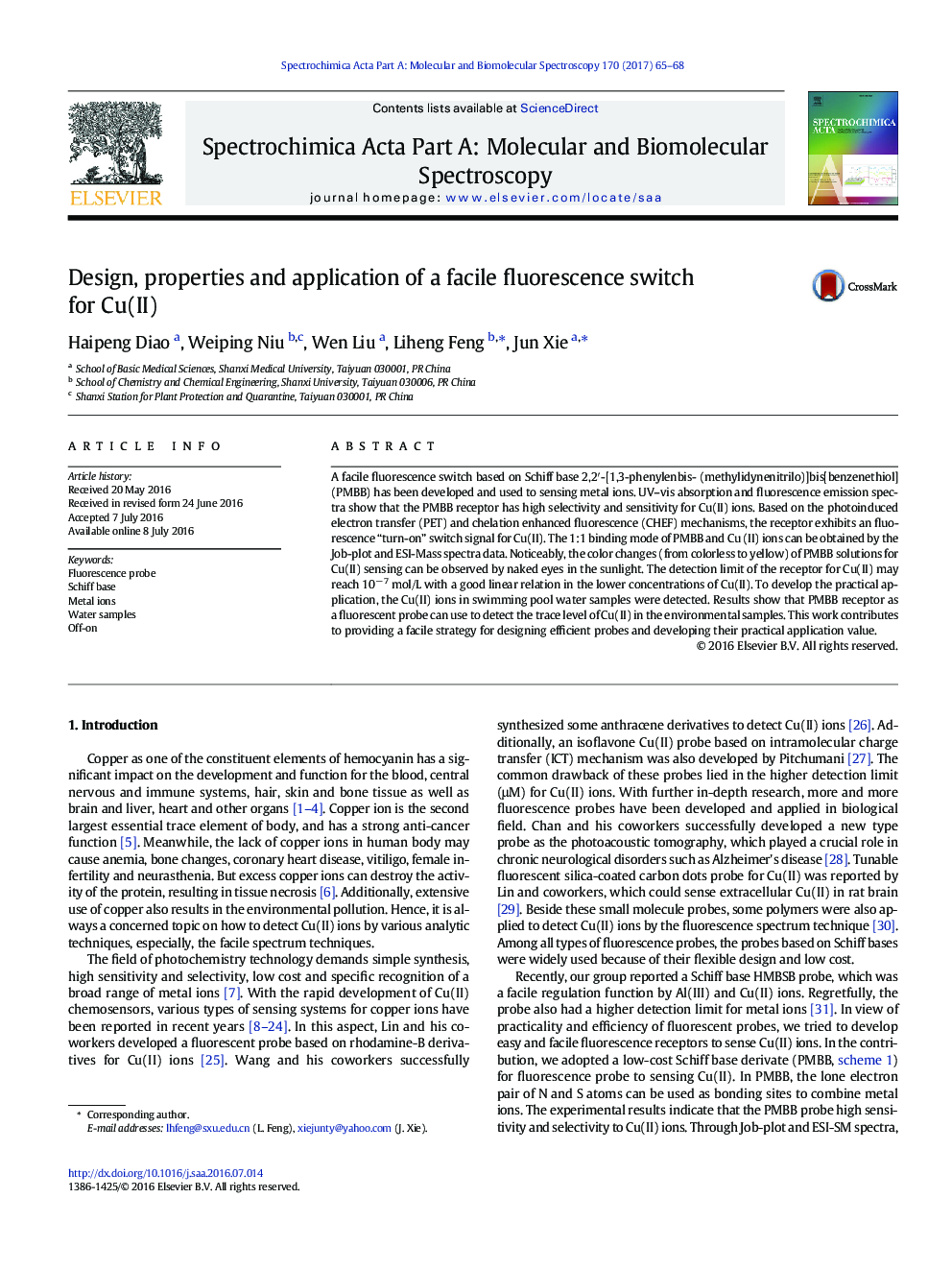| Article ID | Journal | Published Year | Pages | File Type |
|---|---|---|---|---|
| 1230781 | Spectrochimica Acta Part A: Molecular and Biomolecular Spectroscopy | 2017 | 4 Pages |
•A facile fluorescence switch with Schiff base units was designed and synthesized.•The probe has a fluorescence “turn-on” signal for Cu(II) ions.•The probe shows high selectivity and sensitivity for Cu(II) ions.•The probe can be used to detect Cu(II) ions in practical samples.
A facile fluorescence switch based on Schiff base 2,2′-[1,3-phenylenbis- (methylidynenitrilo)]bis[benzenethiol] (PMBB) has been developed and used to sensing metal ions. UV–vis absorption and fluorescence emission spectra show that the PMBB receptor has high selectivity and sensitivity for Cu(II) ions. Based on the photoinduced electron transfer (PET) and chelation enhanced fluorescence (CHEF) mechanisms, the receptor exhibits an fluorescence “turn-on” switch signal for Cu(II). The 1:1 binding mode of PMBB and Cu (II) ions can be obtained by the Job-plot and ESI-Mass spectra data. Noticeably, the color changes (from colorless to yellow) of PMBB solutions for Cu(II) sensing can be observed by naked eyes in the sunlight. The detection limit of the receptor for Cu(II) may reach 10− 7 mol/L with a good linear relation in the lower concentrations of Cu(II). To develop the practical application, the Cu(II) ions in swimming pool water samples were detected. Results show that PMBB receptor as a fluorescent probe can use to detect the trace level of Cu(II) in the environmental samples. This work contributes to providing a facile strategy for designing efficient probes and developing their practical application value.
Graphical abstractFigure optionsDownload full-size imageDownload as PowerPoint slide
